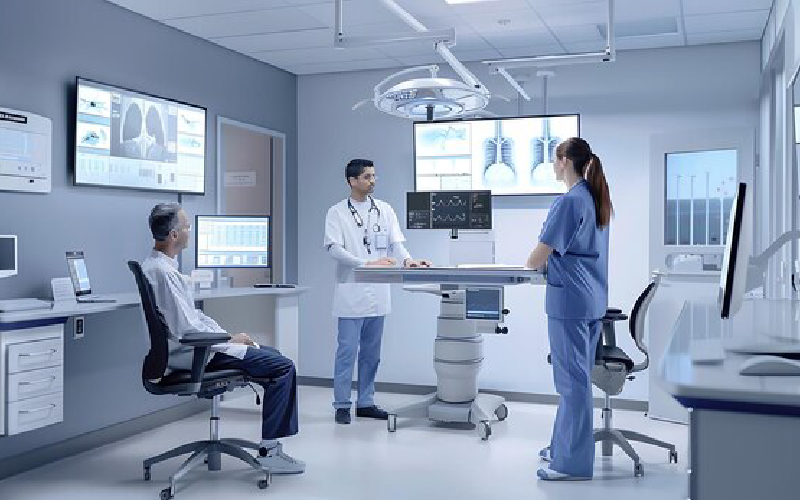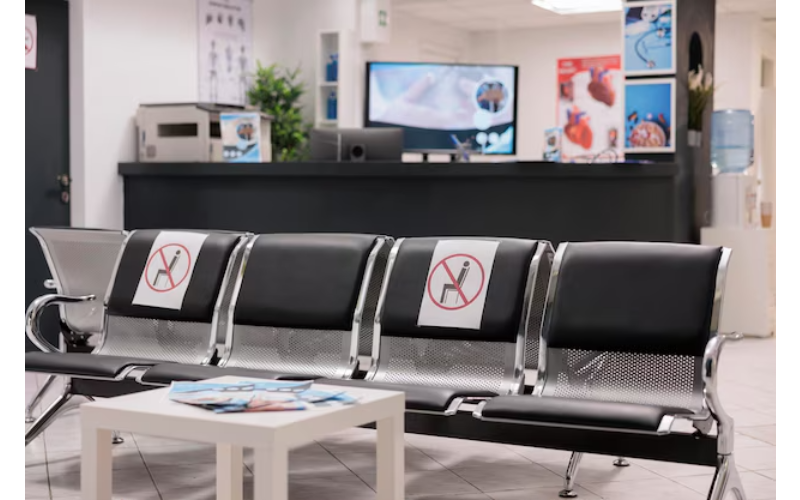Medical consulting rooms are at the heart of personalized patient care. These rooms serve as the central hub where healthcare providers engage with patients to assess their medical conditions, develop treatment plans, and provide ongoing care. The design and functionality of these spaces are critical in facilitating effective communication, enabling thorough examinations, and fostering a sense of trust and comfort between patients and healthcare providers. In personalized patient care, where the focus is on tailoring treatment plans to meet the specific needs and preferences of each individual, the consulting room must support a patient-centered approach. This includes creating an environment that is welcoming, private, and conducive to open dialogue. The layout of the room, the placement of furniture, and the use of technology all contribute to the ability of healthcare providers to deliver care that is both effective and empathetic.
Exploring the Modern Design and Layout of Medical Consulting Rooms
The design and layout of modern medical consulting rooms have undergone significant changes to accommodate the evolving needs of healthcare providers and patients. In the past, these rooms were often utilitarian spaces with little consideration given to aesthetics or patient comfort. However, contemporary consulting rooms are designed with a focus on creating environments that are both functional and pleasing to the eye. The use of natural light, soothing color schemes, and ergonomic furniture are just a few of the elements that contribute to a more comfortable and inviting atmosphere. The layout of the room is also carefully considered to ensure that it supports the workflow of healthcare providers while also providing a sense of privacy and security for patients.

How Medical Consulting Rooms Are Revolutionizing Healthcare Practices?
Medical consulting rooms are at the forefront of revolutionizing healthcare practices by providing environments that support the delivery of advanced and innovative care. These rooms are no longer just spaces for patient consultations but have become integral to the implementation of new healthcare models, such as patient-centered care, team-based care, and integrated care. The ability to customize the layout and functionality of consulting rooms allows healthcare providers to adapt their practices to meet the needs of different patient populations and care settings. For example, the integration of telemedicine capabilities in consulting rooms has enabled healthcare providers to offer remote consultations, expanding access to care for patients in rural or underserved areas.
Creating a Comfortable and Professional Environment in Medical Consulting Rooms
The environment of a medical consulting room has a significant impact on the patient experience and the effectiveness of care delivery. Creating a space that is both comfortable and professional is essential to ensuring that patients feel at ease and that healthcare providers can perform their duties efficiently. Comfort in a consulting room is achieved through a combination of factors, including the use of soothing colors, comfortable seating, and adequate lighting. The inclusion of natural light and elements of nature, such as plants or artwork depicting landscapes, can also contribute to a more relaxing atmosphere. On the other hand, professionalism in a consulting room is conveyed through cleanliness, organization, and the presence of up-to-date medical equipment. The room should be free of clutter, with all tools and resources easily accessible to healthcare providers.
Maximizing Space and Functionality in Medical Consulting Rooms
The efficient use of space and functionality in medical consulting rooms is essential to optimizing the workflow of healthcare providers and ensuring that patients receive the best possible care. In many healthcare settings, space is at a premium, and consulting rooms must be designed to accommodate a variety of functions within a limited area. This requires careful planning and consideration of how the room will be used, with an emphasis on maximizing the available space. For example, multi-functional furniture, such as examination tables that can be adjusted to different heights or chairs that can be easily moved or rearranged, can help to make the most of the space in a consulting room.
The Impact of Technology Integration in Medical Consulting Rooms
The integration of technology in medical consulting rooms has had a profound impact on the delivery of healthcare, enabling providers to offer more efficient, accurate, and patient-centered care. One of the most significant advancements in recent years has been the widespread adoption of electronic health records (EHR) systems, which allow healthcare providers to quickly and easily access patient information during consultations. This has improved the accuracy of diagnoses and treatment plans, as well as the efficiency of care delivery. In addition to EHR systems, many consulting rooms are now equipped with telemedicine capabilities, allowing providers to conduct remote consultations with patients who may be unable to visit the office in person. This has expanded access to care for patients in rural or underserved areas, as well as those with mobility issues.
Medical Consulting Rooms as a Reflection of Healthcare Quality
The design and functionality of medical consulting rooms serve as a reflection of the quality of healthcare services provided by a practice or facility. A well-designed consulting room that is clean, organized, and equipped with modern technology conveys a sense of professionalism and competence, reassuring patients that they are receiving high-quality care. Conversely, a consulting room that is cluttered, outdated, or poorly maintained can create a negative impression, leading patients to question the quality of care they are receiving. In this way, the consulting room serves as a visual representation of the values and standards of the healthcare provider. The attention to detail in the design and layout of the room, as well as the presence of up-to-date medical equipment and resources, demonstrates a commitment to providing the best possible care to patients.
Adapting Medical Consulting Rooms to Meet the Needs of Modern Healthcare
As healthcare practices continue to evolve, medical consulting rooms must also adapt to meet the changing needs of providers and patients. This includes accommodating new healthcare models, such as integrated care and team-based care, as well as the increasing use of technology in healthcare delivery. For example, consulting rooms may need to be reconfigured to support the use of telemedicine, with the addition of video conferencing equipment and secure communication platforms. Similarly, the growing emphasis on patient-centered care may require consulting rooms to be designed with features that enhance patient comfort and engagement, such as adjustable lighting, personalized temperature controls, and digital displays for patient education.
Conclusion
Medical consulting rooms are essential components of the healthcare delivery system, serving as the primary settings where patient care is provided. The design, layout, and functionality of these rooms have a significant impact on the quality of care, influencing patient outcomes, satisfaction, and overall healthcare experience. As healthcare practices continue to evolve, consulting rooms must also adapt to meet the changing needs of providers and patients, incorporating new technologies, supporting advanced care models, and creating environments that are both comfortable and professional. By prioritizing the design and maintenance of medical consulting rooms, healthcare providers can enhance the quality of care they offer and ensure that patients receive the best possible experience.




